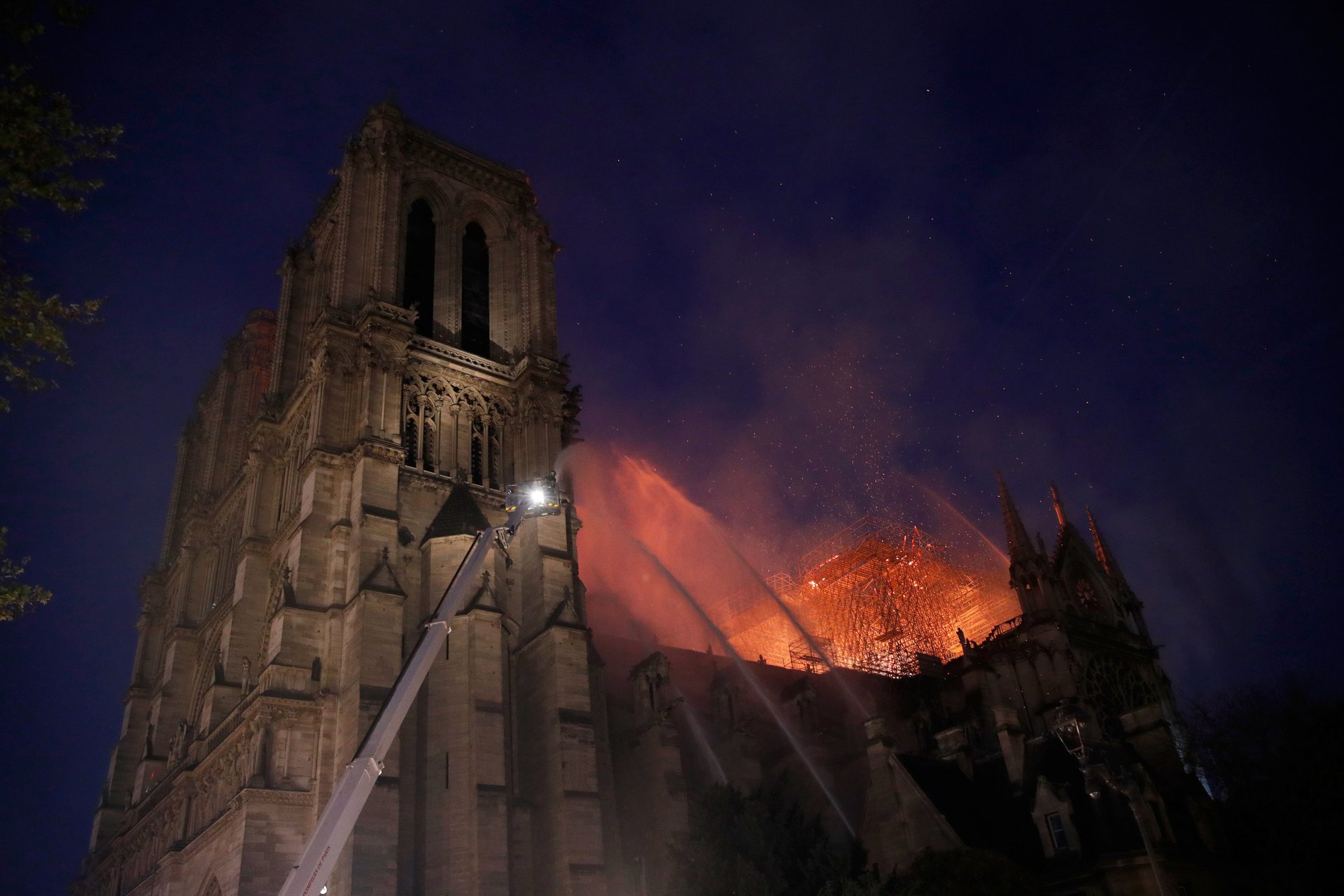The very good reason why we grieve iconic buildings we’ve never seen
Paris is burning, and burning, and burning. As the roof of Notre Dame de Paris caught alight, the world was watching. Its steeple went next, eventually toppling into a cloud of billowing sunset-orange flames. It happened first in Paris, but it happened next across millions of screens the world over, in palms and on laps, at bars and in living rooms, replayed over and over again, even after the flames had subsided.


Paris is burning, and burning, and burning. As the roof of Notre Dame de Paris caught alight, the world was watching. Its steeple went next, eventually toppling into a cloud of billowing sunset-orange flames. It happened first in Paris, but it happened next across millions of screens the world over, in palms and on laps, at bars and in living rooms, replayed over and over again, even after the flames had subsided.
Now comes the grief.
Many of those lamenting the loss of this iconic building have some connection to it. If they are French, the sucker-punch might be the loss of cultural inheritance, a small but very meaningful part of what it means to be French; if they are Catholic, it may be the trauma of losing an irreplaceable holy site at the start of the holiest week of the year.
Still others the world over are remembering their own encounters with it: a visit on a school choir tour, perhaps, or a memorable vacation. (For me, it’s the memory of my first job in journalism, in Paris—specifically, a cold afternoon outside the church in early 2013, filming a BBC story about replacing its bells.) All of this grief unfurls on Twitter—grainy selfies, 280-or-fewer-character-long memories, seemingly identikit tourist shots of a site that will never be the same again.
For people who feel a connection to the site, its loss might be like grieving the death of a celebrity. As Michael Brennan, a sociologist at Liverpool Hope University, told AFP: “Fans mourn not only the loss of the celebrity but other aspects of their personal life which have become bound-up with the celebrity.” The grief we feel may not be so much about the actual loss as it is about our own phenomenological experience—bittersweet memories we have tied up in the cultural output, whether that’s a song or a place. We’re mourning the object itself, naturally, but we’re also reminiscing about who we were at that time, why it mattered to us then, and perhaps even whatever happened next.
But what about the millions of people with no connection to Notre Dame, who are nonetheless feeling the loss of centuries of work by thousands of artisans? What is it about this obliteration that affects us so profoundly? The Croatian author Slavenka Drakulić pondered this when considering why a photo of the desecrated 16th-century Old Bridge in Bosnia and Herzegovina affected her so much—even more, in fact, than one of a dead woman.
For her, these feelings are about our own mortality:
We expect people to die. We count on our own lives to end. The destruction of a monument to civilization is something else. The bridge, in all its beauty and grace, was built to outlive us; it was an attempt to grasp eternity. Because it was the product of both individual creative and collective experience, it transcended our individual destiny. A dead woman is one of us—but the bridge is all of us, forever.
It’s almost too much for us to take: that something as seemingly permanent as bricks and mortar can still be razed almost to the ground. This is especially troubling when it comes to Paris—a city that seems fixed and unmoving.
As journalist Taffy Brodesser-Akner writes in the New York Times:
In every corner of Paris I was reminded: the city is old; it stays the same. People will try to tell you how different it is, how it has evolved: The food scene is different; the construction is killing that neighborhood; the tourists are getting more obnoxious. But, for me, those changes barely register. Paris is essentially the same. That’s the whole point of it. Paris reassures you that you are in a cycle of life that will end, and that everyone before you has felt just as important and just as crucial to the cycle, and yet, they ended, too.
In so many people’s cultural imaginations, Paris is not supposed to change. Monuments such as Notre Dame are not supposed to be affected by the passage of time; but nor was the National Museum of Brazil, or the treasures of Palmyra, or the Glasgow School of Art, or any other cultural treasures we’ve had snatched from us. And when they do, it forces us to confront a very uncomfortable truth: For millennia, we have built a world for the generations to come, but our ability to protect it for them is much more limited than we might like to admit. Monuments may, as the scholar Jadranka Petrovic writes, be built on the “idea of a future,” but ideas make for troublingly insecure foundations.